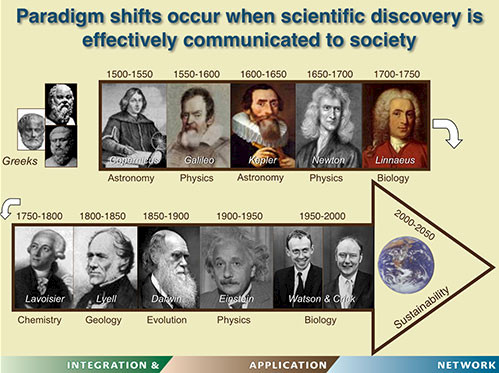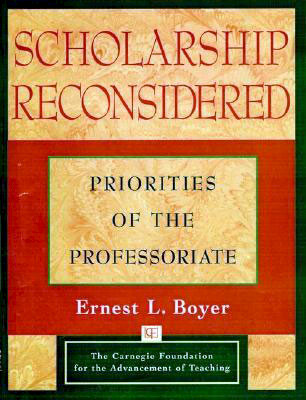Scientists who made a difference: Celebrating effective science application
Bill Dennison ·Scientists whose work has affected society are noteworthy for their abilities to a) produce good scientific results, b) effectively communicate these results to broad audiences and c) affect decisions and perspectives of society. These noteworthy scientists will be celebrated in this blog series on 'Scientists who made a difference'.
Of the four pillars of scholarship defined by Boyer in 1990 (Scholarship Reconsidered: Priorities of the Professoriate), discovery, integration, application and teaching, the most problematic to define and achieve is application. Discovery of new knowledge is fairly straightforward, with scientific publications and various prizes and honors to measure discovery. Integration is both an ancient activity of synthesizing disparate data, and also is an emerging field of scientific activity through various synthesis centers, new tools like modeling, statistics, geographic information systems, informatics, etc. to achieve integration.
Teaching is a very familiar activity to everyone participating in various levels of education, and both the delivery of material and testing to assess its effectiveness is well developed. In contrast to discovery, integration and teaching, application is not as easy to define or assess. One way to begin to develop an understanding of what makes for effective application is to look for examples of excellence in science application. This is one of the motivations for this blog series.
There are scientists who have been particularly successful in using science to create new societal paradigms. These scientists will be celebrated in turn for their contributions in a historical timeline. Beginning in 1500, a scientist from each half century will be celebrated for destroying an existing paradigm and creating a new paradigm widely held by society. These revolutions in thought, beginning with the Copernican Revolution in the early 1500s, will be used as an initial series of 'Scientists who made a difference'.

In addition to this historical timeline of science icons, an attempt to relate to more contemporary and approachable scientists will be included in this series of 'Scientists who made a difference'. From these historical and contemporary examples, some common themes should emerge as to the way and manner that the science application is realized.
Another reason to focus on the human aspect of science is that telling stories about people solving problems using science is much more engaging than providing dry scientific results and abstract theories. The human side of science is often forgotten or ignored in textbooks and science publications, yet science is indeed very much a human enterprise. Understanding the human component of doing science is particularly important when considering science application - since application involves taking science to society.
I am going to attempt to do something a bit different in order to present the human side of 'Scientists who made a difference'. In addition to providing a brief biographical sketch in the context of the existing scientific paradigms, I will present the 'Poetry and Art' of the these scientists. The 'Poetry' will use their words, exactly as they wrote them (albeit translated to English when necessary), but in prose form to focus on the cadence and word choice. The 'Art' will use their illustrations, again to focus not just on the concepts expressed, but also on the beauty and symmetry of the drawings.
If anyone following this blog series would like to nominate either historical or contemporary scientists to be included, I would be happy to expand the series accordingly. This should be an interesting exercise, and I will enjoy exploring the lives of 'Scientists who made a difference' and looking for examples of their poetic and artistic expression.
About the author
Bill Dennison

Dr. Bill Dennison is a Professor of Marine Science and Vice President for Science Application at the University of Maryland Center for Environmental Science.


